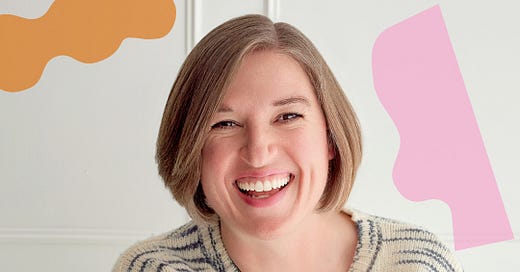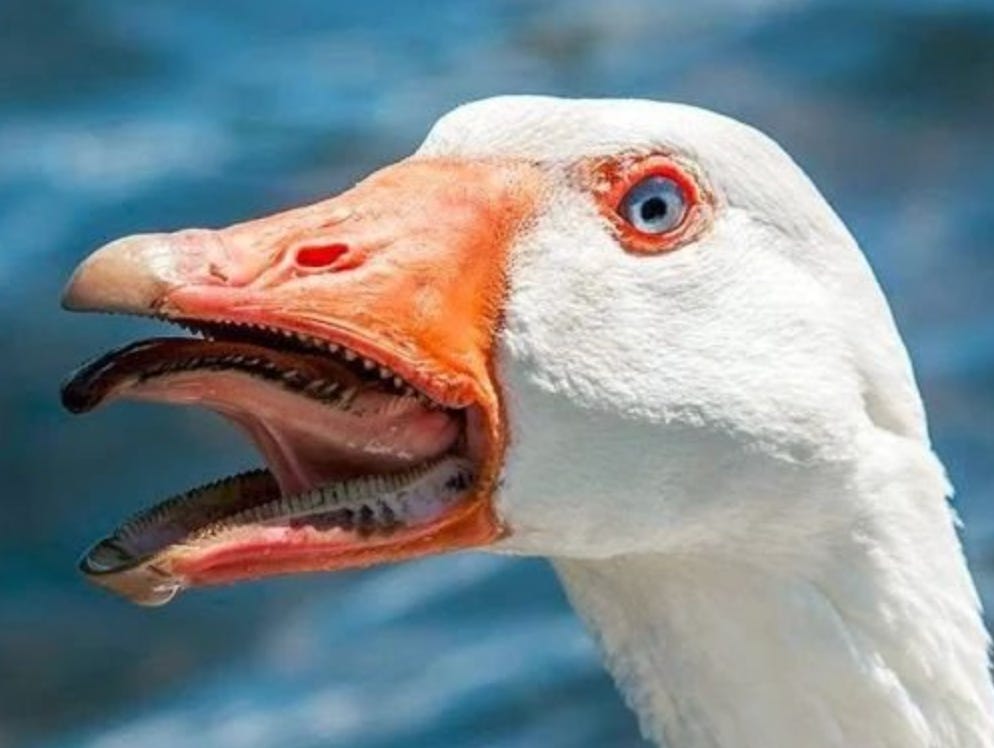This post is part of our ongoing series on emotional granularity-the skill of identifying and naming emotions with greater precision. Today, we’re focusing on how you can use Emotional Granularity as a guide to get closer to how you actually want to feel around the young people in your life.
I got the best text message a few days ago from a kid I taught in 6th grade who’s now in college.
“Sax! There is this Goose that hangs around my dorm harassing people, and the other day my friend was like ‘Why don’t you just scare it away?’ and I immediately launched into a speech about their teeth. Made me think of you and I wanted to say hey. Hope you’re good!”
When I tell you this text made my week, I mean it. I love hearing from former students and staying connected to them as they move through the world.
When I taught middle school I used to spend the first day of school doing 4 things:
Telling them my education story. That I had an incredibly hard time in school because of my learning disabilities and how I got in trouble all the time because it felt easier to get in trouble than it was to feel stupid all day.
Making my annual promise- that they weren’t going to like everything they did in class, and they were not always going to like me, but the one thing they never had to fear when they were with me was humiliation.
Asking them my favorite weird question- What animal do you think you could defeat in hand to hand combat?
Playing the Dad Joke Game
For those of you that are curious, I think I could take a Raccoon. I know it wouldn’t be easy with their cleverness and thumbs, but I want an answer that is scrappy and, in fancy education speak, within my zone of proximal development: not too easy and not impossible. A worthy adversary.
This fateful day the class was buzzing with laughter and people blurting challenges or doubt as each kid shared their answer with that special adolescent tone of nervous laughter. One kid, very confidently said, “I could take a Goose.” Then came a voice from the sidelines, equal parts calm, urgent, and that of a weary combat veteran who knows you don’t know shit. Like Captain Quint at that town hall in Jaws. “You don’t know about the teeth, man. The teeth. You don’t mess with Geese.” We all paused as it became immediately evident this kid had a story to tell and we definitely all want to hear it. He launched into a childhood trauma of a tangle with a Goose that did not go well. He even had a scar on his arm for that added level of drama and intrigue.
And off we go, down the rabbit hole. I’m googling Geese teeth, kids are demanding more details from the victim, more war stories from their toddlerhood emerge. And then it happens, we find the picture.
Genuine nightmare fuel. I mean, zoom in on that picture. We were all equal parts horrified and fixated.
📬 Want more research-backed insights on raising emotionally intelligent adolescents?
As unexpected as those teeth were for me, the outcome of that momentary fascinated silliness was equally unexpected. Everyone left that day with a genuine sense of belonging over this shared identity, the knowers that Geese have teeth. It became short hand for the rest of the year. When someone was scared, anxious, or unsure and trying to manage it, it was feeling geese teethy. When they learned something new and it changed the way they thought about the world, a geese teeth moment. When I was trying to lift a kid’s spirits after they suffered a social blow and wanted to invite in a little levity to shift the terrain, “do you want me to sick a Goose on them?”
There’s a concept in teaching called Understanding by Design, or Backwards Design, which just means starting all your curriculum planning by first thinking through the ideal outcomes and planning backwards from that. I always took one extra step; I always started with the ideal emotional outcome before I ever planned academic outcomes.
I got super granular about how I wanted to feel when I went to work everyday:
Silly
Content
Purposeful
Connected
Curious
I got super granular about how I wanted kids to feel when they came into my class every day:
Safe
Curious
Belonging
Supported
Motivated
Joyful
Content
This wonderful young person texted me 8 years after being in my class because I planned outcomes around how I wanted kids to feel and then committed to making those emotions come alive for the kids in my care. I was equally rigorous about planning for the emotions I wanted to feel, which meant they also had an adult in their orbit every day who was genuinely enjoying them. The other outcome? I was able to push kids to stretch academically in ways that changed who they were as thinkers and learners.
Because they felt like they belonged. Because I promised them I would never humiliate them. Because I made time for a silly question that built connection and was genuinely interested in their answers, as was everyone else.
Looking back, that moment became a kind of emotional shorthand between us. Playful. Safe. Light. Connected. And isn’t that what we’re all hoping for in our relationships with our kids?
It started as a silly question, but it wasn’t one I asked on accident. It was a low stakes act to make the feeling of belonging feel possible and present. It was one of those tiny threads that kept us connected through everything else the year threw at us.
And the best part? This kind of magic isn’t reserved for classrooms. Parents, you have more power than you think. To shape how your kids feel. To shape how you feel when you're with them. And the tools are already in your hands.
Emotional granularity isn’t just about helping adolescents name their feelings. It’s about us getting clear too. How do you want your kids to feel when they’re around you? How do you want to feel in their presence? When you know the feeling you’re aiming for, you can lead with actions that make it real.
Because when we panic (about Adolescence, about TikTok, about Social Media, about their future), it’s easy to forget that we already have tools. Small ones. Underestimated ones. Like magical questions. Like choosing to connect instead of correct. Like choosing to plan around the emotions we want to feel. What if the best parenting tools aren't new at all, but the small, joyful ones already in your hands?
The world our kids are growing up in is complex, and so is parenting them through it. But connection doesn’t have to be complicated. It starts in the small moments. The playful ones. The ones that say, “I see you, and I like you.”
That’s where belonging begins. That’s the work. And it’s more than enough.
Making it Happen IRL 💫 ✨
You Say: Tonight I want to feel more fun, happiness, and joy
You Choose to:
Smile and hug your child when they come home without any questions or feedback.
Keep your worries about screen time on the sidelines and ask your kid to show you a few TikToks they think are really funny, offer zero commentary, laugh along with them.
Ask them silly questions on the drive home:
what’s the weirdest thing you’ve ever found in your pocket?
what’s something you could give a 20 min TED Talk on with zero prep
when’s the last time you had to hold in a fart to avoid catastophe?
what animal could you beat in hand to hand combat?
Ask your kid to play their current favorite music in the car or at home, ask them why they like it, and offer zero commentary.
Tell your kid one thing you really enjoy about them or are proud of them for. No sarcasm allowed.
You’re doing great 🌈
🌿 If this post resonated with you, subscribe to Wild Feelings for more reflections, tools, and support as we reimagine adolescence together.






My parent—and former teacher—heart is bursting. This whole post is just so, so good!